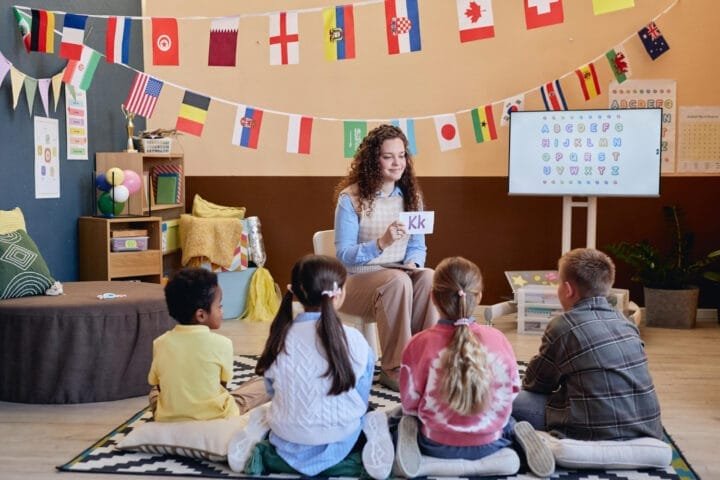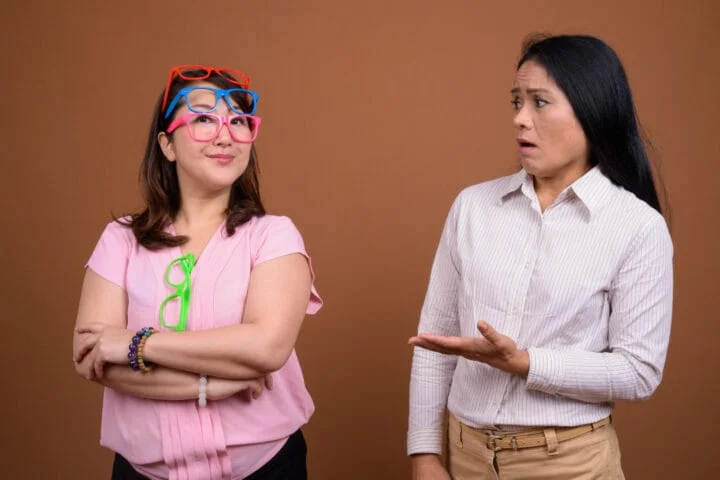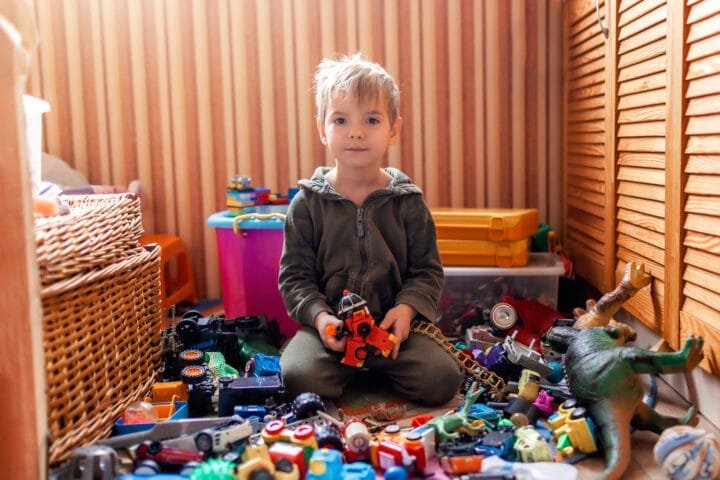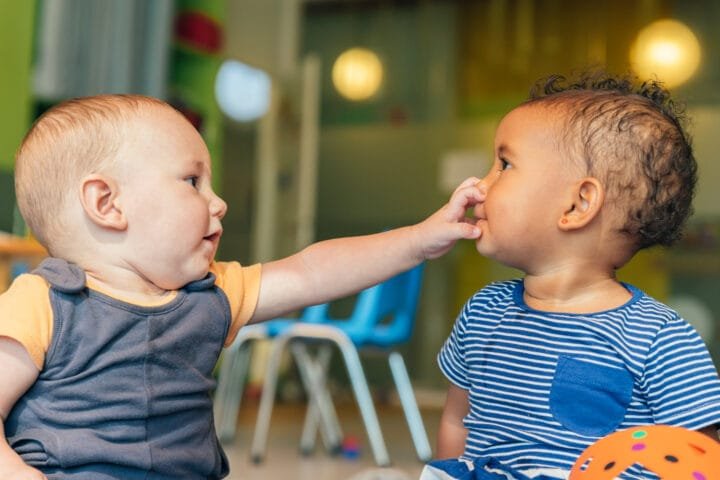Imaginary Friends: The Hidden Psychological Battle Every Parent Is Facing
Have you ever caught your little one deep in conversation with thin air? Or perhaps they’ve insisted on setting an extra plate at the dinner table for their “special friend” that only they can see? I remember the first time my daughter introduced me to her invisible buddy “Sparkles” – I wasn’t sure whether to play along or gently redirect her to reality. That moment sparked a journey into understanding one of childhood’s most fascinating phenomena: imaginary friends.
What I discovered might shock you. Far from being a sign of social problems or developmental issues, these invisible companions might actually be supercharging your child’s brain development! Yet so many parents lie awake at night, wondering if their child’s imaginary friendship is something to worry about or celebrate. The answer isn’t as straightforward as you might think, and what you do next could significantly impact on your child’s future social and emotional wellbeing.
I. The Psychology Behind Imaginary Friends
The Invisible Companions Living Among Us
Imaginary friends come in all shapes and sizes – from talking teddy bears to invisible playmates with elaborate backstories. My daughter’s “Sparkles” was a purple fairy who supposedly lived in our garden and had very specific preferences about bedtime snacks. Sound familiar?
Research shows these creative companions are incredibly common. Approximately 65% of children develop imaginary friends by age 7, according to a landmark study by Marjorie Taylor at the University of Oregon 1. What’s even more fascinating is how these relationships evolve over time – they’re not just static characters but dynamic relationships that grow with your child.
“Imaginary friends represent a natural expression of a child’s developing mind,” explains Dr. Sarah Davis, child psychologist at Stanford Children’s Center. “They demonstrate sophisticated cognitive abilities, including abstract thinking and narrative creation.”
These invisible friends aren’t just random figments of imagination. They serve crucial purposes in developing your child’s brain. When my son created an entire family of invisible dinosaurs who lived under his bed, I noticed he would have them act out scenarios that mirrored challenges he was facing at preschool. It was his way of processing social dynamics in a safe environment.
The significance of these pretend pals goes beyond simple play. They represent a cognitive milestone where children can maintain and manipulate complex mental representations. Think about it – your child is essentially creating and maintaining an entire personality separate from their own! That’s some serious mental gymnastics happening in those little brains.
The Emotional Security Blanket
Imaginary friends often appear during times of transition or stress. When we moved to a new neighborhood, my daughter’s invisible fairy friend “Sparkles” suddenly acquired three siblings. This wasn’t coincidental – these companions were helping her navigate the emotional landscape of change.
These pretend pals offer something truly special: unconditional acceptance and control in a world where children often feel powerless. Your child gets to dictate the terms of these friendships entirely – something they rarely experience in real-world relationships with peers or adults.
“Children use imaginary companions as emotional regulation tools,” notes Dr. Emily Thompson, developmental psychologist. “They provide comfort during difficult transitions and help children process complex emotions they may not yet have the vocabulary to express.”
I’ve seen this firsthand when my son would have his invisible dinosaur friend “stand up” to playground bullies in pretend scenarios at home. He was rehearsing courage and assertiveness through imagination before trying these skills in real-world situations.
II. The Potential Benefits of Encouraging Imaginary Friends
Supercharging Creativity and Imagination
Remember when you could turn a cardboard box into a spaceship or a blanket into a royal castle? That magical thinking doesn’t just make childhood fun – it’s laying crucial neural pathways for creative problem-solving later in life.
Children with imaginary companions often demonstrate enhanced narrative abilities and storytelling skills. When my daughter would recount Sparkles’ daily adventures, she created complex plots with conflicts and resolutions. This wasn’t just cute – she was developing sophisticated language patterns and narrative structures that would later help her excel in writing and communication.
The link between childhood imagination and adult creativity isn’t just parental wishful thinking. A 2020 study published in the Journal of Creative Behavior found that adults who had imaginary friends as children scored significantly higher on creative thinking assessments than those who didn’t. These invisible companions might be secretly preparing your child for careers requiring innovation and original thinking!
“The ability to generate novel ideas and scenarios through pretend play establishes cognitive flexibility that benefits children throughout their lives,” explains creativity researcher Dr. Jonathan Hayes. “These early exercises in imagination create neural pathways that support innovative thinking well into adulthood.”
I noticed my son’s dinosaur companions helped him generate creative solutions to everyday problems. When he couldn’t reach something on a high shelf, he didn’t just ask for help – he created an elaborate pulley system with string and toys because “that’s how Rexy would do it.”
Social Skills Bootcamp
Imagine having a judgment-free zone to practice tough conversations or challenging social scenarios. That’s exactly what imaginary friends provide for children – a risk-free rehearsal space for real-world interactions.
When my daughter would “argue” with her invisible friend and then make up, she was actually developing conflict resolution skills. I’d overhear her practicing phrases like “I feel sad when you take my toys” – language that later transferred to her kindergarten friendships.
Research confirms this connection between pretend play and social competence. A study from the University of Washington found that children who engaged in complex imaginative play showed greater empathy and perspective-taking abilities than those who didn’t 3. By mentally stepping into their imaginary friend’s shoes, children are literally practicing understanding others’ viewpoints and feelings.
“These pretend relationships serve as a training ground for real social interactions,” says social development expert Dr. Lisa Chen. “Children rehearse conversations, practice sharing, and work through conflicts – all valuable experiences that translate to peer relationships.”
The benefits extend beyond the playground. Children who create detailed imaginary companions are essentially engaging in advanced character development – understanding motivations, emotions, and how background stories influence behavior. No wonder so many successful novelists and filmmakers report having had vibrant imaginary friends during childhood!
Emotional Regulation and Coping Mechanisms
Life throws curveballs at all of us – including our kids. Imaginary friends often serve as emotional support systems during challenging times. When my son started elementary school, his invisible dinosaur friend suddenly developed “first day jitters” too. By comforting his imaginary companion, he was actually processing and managing his own anxiety.
This psychological phenomenon, called projection, allows children to address feelings that might otherwise overwhelm them. It’s a powerful coping strategy that helps them understand and regulate emotions in a developmentally appropriate way.
“Children often attribute their own challenging emotions to their imaginary friends,” explains child therapist Dr. Michael Ramos. “This creates emotional distance that makes difficult feelings more manageable and provides a safe way to work through them.”
I noticed this when my daughter’s fairy friend became “scared of the dark” shortly after she developed the same fear. By reassuring Sparkles each night that the darkness was safe, she was actually reassuring herself. Within weeks, both my daughter and her invisible companion had conquered their fear!
III. Potential Concerns and Drawbacks
When Imagination Crosses Concerning Boundaries
While imaginary companions are typically healthy, there are situations that might warrant closer attention. The distinction lies not in whether your child has an imaginary friend but in how that relationship functions in their life.
I remember feeling a flutter of concern when my son refused to attend a birthday party because “his dinosaurs weren’t invited.” When imagination begins interfering with normal social activities or daily functioning, it’s time for a closer look 1.
“Parents should watch for signs that the imaginary relationship is becoming a substitute for real-world connections,” advises child psychiatrist Dr. Rebecca Wilson. “Occasional preference for imaginary play is normal, but consistent avoidance of peer interactions warrants attention.”
Other potential red flags include imaginary friends that are consistently aggressive or frightening, or companions that encourage dangerous or destructive behavior. These scenarios are rare but might indicate that your child is processing difficult emotions they can’t express directly.
The good news? Even these concerning scenarios typically respond well to supportive parenting and, when needed, professional guidance. Most children naturally maintain the distinction between imagination and reality, understanding on some level that their companions aren’t physically present.
The Social Stigma Challenge
“Mom, James said I’m a baby because I talk to Sparkles.” My daughter’s tearful confession highlighted an unfortunate reality – sometimes other children (and even adults) stigmatize imaginative play as immature or strange.
This social pressure can create genuine challenges, especially as children enter school settings where conformity often becomes more important. By age 7, many children become self-conscious about their imaginary companions, keeping them private or gradually outgrowing them as peer relationships take precedence.
“Elementary school represents a developmental shift where children become more aware of social norms and peer acceptance,” explains educational psychologist Dr. Samantha Jones. “Parents can help by validating their child’s imagination while also supporting healthy peer relationships.”
I found myself navigating this delicate balance when I suggested to my daughter that maybe Sparkles could be a special at-home friend, while school was for making real friends. This approach acknowledged her emotional attachment to her imaginary companion while helping her understand different social contexts.
Parental Misunderstandings and Cultural Perspectives
Imaginary friends have been viewed through dramatically different cultural lenses throughout history. In some traditions, a child’s invisible companion might be seen as a spiritual connection or even a link to ancestors. In other contexts, parents might worry about psychological implications or religious concerns about fantasy.
My mother-in-law was deeply worried about my son’s dinosaur friends, believing they represented an unhealthy detachment from reality. This generational perspective reflects changing attitudes toward childhood imagination. Understanding these different viewpoints helps parents navigate well-meaning but outdated advice from family members.
“Cultural and historical contexts significantly influence how we interpret children’s imaginative play,” notes anthropologist Dr. Elena Martinez. “What’s seen as concerning in one culture might be celebrated in another.”
The key is distinguishing between cultural perspectives and evidence-based understanding of child development. Modern developmental psychology overwhelmingly supports the benefits of imaginative play, including imaginary companions, for cognitive and emotional development 5.
IV. Research-Based Perspectives
What Science Reveals About Invisible Friends
The research on imaginary companions has evolved dramatically over the past century. Early Freudian perspectives sometimes pathologized these relationships, viewing them as compensatory for social deficits. Modern research thoroughly debunks this view, revealing quite the opposite.
A groundbreaking longitudinal study followed children with imaginary friends into adulthood and found they demonstrated higher creative thinking, stronger narrative skills, and greater empathy than their peers without imaginary companions. Far from indicating problems, these invisible relationships predicted positive developmental outcomes!
“Our research consistently shows that children with imaginary friends typically demonstrate advanced theory of mind – the ability to understand others’ thoughts and feelings,” explains developmental researcher Dr. Alison Gopnik. “These children aren’t compensating for social deficits; they’re often exercising sophisticated social cognition.”
The neurological evidence is equally fascinating. Brain imaging studies show that children engaged in imaginative play activate neural networks associated with executive function and social cognition – essentially, they’re strengthening the same brain regions involved in planning, self-regulation, and understanding others.
When my daughter would switch perspectives between herself and Sparkles during play, she wasn’t just having fun – she was literally building neural connections that would support her social and emotional intelligence throughout life.
Expert Consensus Across Disciplines
Remarkably, professionals across various disciplines have reached similar conclusions about imaginary friends. Child psychologists, educators, and pediatricians generally agree these companions represent normal, healthy development for many children.
The American Academy of Pediatrics includes imagination and pretend play as important developmental milestones. Rather than discouraging imaginary companions, many educators now recognize their potential as teaching tools for emotional literacy and social skills 3.
“The professional consensus has shifted dramatically,” notes educational consultant Dr. Marcus Johnson. “Where we once might have worried about a child with an imaginary friend, we now recognize these relationships as opportunities to support emotional development and creativity.”
This shift reflects our evolving understanding of childhood development. Rather than seeing children as empty vessels to be filled with knowledge, contemporary perspectives recognize the active, constructive nature of learning through play and imagination.
I found this perspective enormously reassuring when consulting our family pediatrician about my son’s elaborate dinosaur companions. “Keep supporting his imagination,” she advised. “These pretend relationships are helping him develop skills he’ll use throughout life.”
Debunking Common Misconceptions
Let’s tackle some persistent myths about imaginary friends that continue to worry parents. First, having an imaginary companion does NOT indicate loneliness or social problems. In fact, research shows children with imaginary friends often demonstrate stronger social skills and larger real-world friendship networks than their peers 1.
Second, these friendships aren’t signs of difficulty distinguishing fantasy from reality. Even very young children with elaborate imaginary worlds understand on some level that their companions aren’t physically real. When my daughter’s imaginary fairy “knocked over” a glass, she looked at me with a mischievous smile that made it clear she knew exactly who was really responsible!
Perhaps most importantly, imaginary friends aren’t something children need to “outgrow” by a certain age. While most invisible companions naturally fade as children develop more complex peer relationships, some creative individuals maintain forms of imaginative companionship well into adulthood – especially those in artistic fields.
“The timeline for imaginary friendships varies enormously,” explains developmental psychologist Dr. Rachel Woods. “What matters isn’t when they end but the purpose they serve in the child’s emotional and cognitive development.”
When my son gradually stopped mentioning his dinosaur companions around age 8, I almost felt nostalgic for those elaborate pretend scenarios. But I recognized that they had served their purpose in his development, helping him navigate earlier social challenges that he now faced with confidence.
V. Age-Appropriate Responses and Guidance
Early Childhood: The Magic Years (Ages 2-5)
The preschool years represent the golden age of imaginary companions. During this developmental window, children’s cognitive abilities expand dramatically, allowing them to maintain mental representations of characters who aren’t physically present.
At this stage, simple acknowledgment of your child’s imaginary friend strikes the perfect balance – neither dismissing their creative world nor over-involving yourself in it. When my daughter would tell me Sparkles needed her own plate at dinner, I might say, “I see Sparkles is joining us today,” without actually setting an extra place 3.
This approach validates your child’s imagination while maintaining appropriate boundaries. You’re essentially communicating, “I respect your creative world, but we also live in the real world with real constraints.”
“Young children benefit from parents who can playfully engage with their imaginary world while still maintaining reality-based limits,” advises early childhood specialist Dr. Nina Patel. “This balance helps children develop both creative thinking and understanding of social norms.”
I found gentle humor particularly effective during this phase. When my son claimed his dinosaur friend made a mess in his room, I might smile and say, “Well, please ask Rexy to help clean up too – everyone helps in this house, even dinosaurs!” This approach acknowledged his imagination while reinforcing real-world responsibilities.
Middle Childhood: Navigating School and Social Worlds (Ages 6-9)
As children enter school settings, they face new social dynamics that may influence their relationship with imaginary companions. During this phase, many children either internalize these relationships (making them more private) or gradually outgrow them as peer friendships become more complex.
This transition isn’t always smooth. I remember my daughter coming home upset after classmates teased her about mentioning Sparkles during show-and-tell. This presented an opportunity to discuss both the value of imagination and the reality of different social contexts.
“Elementary school represents a time when children become more aware of peer perceptions,” explains school counselor Dr. James Wilson. “Parents can help by validating their child’s emotional experience while also supporting their social navigation skills.”
During this phase, I found it helpful to frame imaginary friends as something special that not everyone understands. This approach preserved my children’s sense of imagination as valuable while acknowledging the changing social landscape they were navigating.
School-related considerations become particularly important during these years. A quiet conversation with your child’s teacher can help ensure they respond appropriately if your child mentions their imaginary companion in the classroom. Most educators understand the developmental value of imagination and will handle these situations sensitively.
Later Childhood and Beyond: Evolution of Imagination (10+)
While many children naturally transition away from imaginary companions during the elementary years, some maintain these relationships longer – particularly creative, artistic children. This persistence doesn’t indicate developmental problems but often reflects continued engagement with imaginative thinking.
“Older children with imaginary friends often channel their creativity into writing, art, drama, or other creative pursuits,” notes creativity researcher Dr. Elizabeth Moore. “These imaginary relationships evolve rather than disappear entirely.”
I noticed this transition with my daughter, whose fairy friend gradually transformed into characters in the stories she wrote. By age 11, she no longer spoke directly about Sparkles but had developed a passion for creative writing that clearly drew on her earlier imaginative play.
For older children who continue to mention imaginary companions, sensitivity becomes especially important. Preteens are acutely aware of social judgment, and well-meaning teasing about childhood imaginary friends can create genuine distress.
The key is supporting the transition from externalized imagination (talking directly to invisible friends) to internalized creativity (writing, art, or other expressive outlets). This natural evolution preserves the cognitive benefits of imaginative thinking while aligning with age-appropriate social development.
VI. Practical Parenting Strategies
Engaging Positively With Your Child’s Invisible Companion
How you respond to your child’s imaginary friend can significantly impact both their relationship with their companion and the developmental benefits they derive from it. I’ve found that simple acknowledgment without excessive involvement strikes the right balance.
When my son would tell elaborate stories about his dinosaur friends’ adventures, I’d listen attentively, ask occasional questions, and appreciate his creativity – without pretending I could see the dinosaurs myself or over-elaborating on the scenario 3.
“Parents can acknowledge the child’s perspective without claiming to share their perceptual experience,” advises family therapist Dr. Karen Williams. “This approach respects the child’s imagination while maintaining appropriate boundaries between fantasy and reality.”
Some practical approaches that worked in our family included:
Using imaginary friends as teaching tools for emotional literacy: “How do you think Sparkles feels when that happens?”
Respecting the companion’s importance to your child without over-accommodating: “I understand Sparkles is important to you, but we still need to leave for school on time.”
Avoiding using the imaginary friend as a behavior management tool: Rather than saying, “Sparkles wouldn’t like it when you hit your brother,” focus on real-world consequences and emotional impacts.
These balanced approaches acknowledge your child’s creative world while helping them navigate reality – an important developmental skill that imaginary friendships can actually help strengthen.
Recognizing When Professional Support Might Help
While imaginary companions typically represent healthy development, certain situations might warrant professional guidance. These aren’t about the presence of an imaginary friend but about how that relationship functions in your child’s life.
Warning signs that might suggest talking with a professional include:
- Intense distress when others don’t acknowledge the imaginary friend as real
- Using imaginary companion to consistently avoid real-world relationships
- Imaginary friends that encourage dangerous or destructive behavior
- A sudden appearance of frightening or violent imaginary companions in a previously well-adjusted child
When my niece developed an imaginary friend who constantly criticized her and made her feel bad, my sister consulted a child psychologist. This turned out to be a manifestation of anxiety that responded well to supportive therapy – a reminder that imaginary friends sometimes express emotions children can’t articulate directly.
“Imaginary companions often reveal what children are processing emotionally,” explains child psychologist Dr. Thomas Rivera. “In rare cases where these relationships cause distress, professional support can help children express and manage difficult feelings more directly.”
If you’re concerned, starting with your child’s pediatrician provides a good first step. They can help determine whether the situation falls within normal developmental variation or might benefit from additional support.
Communicating With Other Adults in Your Child’s Life
Navigating different perspectives about imaginary friends can be challenging, especially when well-meaning grandparents, teachers, or co-parents express concerns. Clear, informed communication becomes essential.
I found myself in this position when my mother-in-law expressed worry about my son’s dinosaur companions, suggesting we should “discourage this fantasy world.” A calm conversation sharing current research on the developmental benefits of imaginative play helped ease her concerns without creating family tension.
“Different generations were raised with different perspectives on childhood imagination,” notes family communication specialist Dr. Susan Blake. “Sharing contemporary understanding about developmental benefits can help bridge these generational gaps.”
For divorced parents or co-parenting situations, consistency becomes particularly important. Children benefit when all caregivers take a similar approach to their imaginary companions – ideally, one that respects the child’s imagination while maintaining appropriate real-world boundaries.
Teacher communication represents another important consideration. A brief, matter-of-fact email or conversation during parent-teacher conferences can ensure educators understand your child’s imaginary companion. Most teachers appreciate this information and will respond appropriately if the topic arises in the classroom.
VII. Conclusion: Finding Balance in the Imaginary Friendship Debate
The journey through childhood imagination represents one of parenting’s most fascinating territories. What initially might seem concerning – your child’s elaborate conversations with an invisible companion – actually reveals the remarkable complexity of their developing mind.
The research is clear: for most children, imaginary friends represent a healthy, even advantageous phase of development. These invisible companions support emotional regulation, enhance creativity, build social cognition, and provide safe spaces to process challenging experiences. Far from indicating problems, they often predict positive developmental outcomes!
Yet parenthood rarely offers simple either/or solutions. The balanced approach recognizes both the benefits of imaginary companions and the importance of supporting real-world social connections. This middle path neither dismisses your child’s creative world nor over-involves adult reality in their imaginative play.
I’ve watched both my children navigate relationships with imaginary companions, then gradually transition these experiences into other creative expressions as they matured. What remains isn’t just memories of cute childhood stories but the cognitive, social, and emotional skills these invisible friendships helped develop.
Perhaps the most powerful parenting perspective embraces these imaginary companions as windows into your child’s emotional world. When my daughter created an invisible fairy who was “afraid of thunderstorms,” she was giving me insight into her own fears. When my son’s dinosaur friend became “brave enough to try new foods,” he was working through his own picky eating phase.
These invisible friends aren’t just childhood fantasies to be tolerated – their developmental tools to be appreciated. They reveal our children’s inner worlds, help them process emotions, and build crucial cognitive skills that will serve them throughout life.
So, the next time your child introduces you to their invisible companion, consider responding with attentive curiosity rather than concern. That seemingly empty space beside them isn’t empty at all – it’s filled with cognitive development, emotional processing, and the magical thinking that makes childhood such a special time.
After all, these imaginary friends won’t stay forever. But the developmental gifts they leave behind will shape your child’s thinking for years to come.
FAQs
Imaginary friends are completely normal and remarkably common in child development. Research shows approximately 65% of children develop imaginary companions by age 7. Far from being concerning, these invisible friends often indicate healthy cognitive development, creativity, and emotional processing. Most child psychologists and developmental experts now recognize imaginary friends as a positive developmental milestone rather than something to worry about. These pretend companions help children practice social skills, work through emotions, and develop creative thinking in a safe environment.
The best approach is simple acknowledgment without excessive involvement. Acknowledge your child’s imaginary friend with interest and respect, but without pretending you can see or hear them yourself. For example, if your child says their imaginary friend wants a snack, you might respond, “I see Sofia is hungry today. What do you think she’d like to eat?” This validates your child’s imagination while maintaining appropriate boundaries between fantasy and reality. Avoid using the imaginary friend as a behavior management tool or dismissing them as “not real” in a way that might shame your child’s creative thinking.
Imaginary friends most commonly emerge between ages 2-5, coinciding with significant cognitive development that allows children to maintain mental representations of characters who aren’t physically present. While many children naturally transition away from openly discussing their imaginary companions around ages 6-9 as peer relationships become more complex, there’s no “deadline” for outgrowing them. Some highly creative children maintain forms of imaginary companionship into later childhood or even adolescence, often transforming these relationships into creative outlets like storytelling or art. The timeline varies widely and typically evolves naturally without parental intervention.
Imaginary friends offer numerous cognitive and emotional benefits. They help children develop perspective-taking and empathy by mentally representing another’s viewpoint. They serve as emotional regulation tools, allowing children to process complex feelings in a safe context. Research links imaginary companions to enhanced narrative abilities, vocabulary development, creative problem-solving, and social cognition. Brain imaging studies show that imaginative play activates neural networks associated with executive function and social understanding. Rather than indicating social problems, children with imaginary friends often demonstrate stronger real-world social skills and larger friendship networks than peers without invisible companions.
While imaginary friends are typically healthy, certain situations might warrant professional consultation. Consider speaking with a pediatrician or child psychologist if: your child experiences intense distress when others don’t acknowledge their imaginary friend as real; consistently uses the imaginary companion to avoid real-world relationships; has an imaginary friend that encourages dangerous or destructive behavior; or suddenly develops frightening or violent imaginary companions after previously being well-adjusted. These situations are rare, but when they occur, they may indicate that your child is processing difficult emotions they can’t express directly, and professional support could help them develop more effective coping strategies.
Top 5 Books About Imaginary Friends
This Caldecott Medal-winning picture book tells the heartwarming story of an imaginary friend waiting to be chosen by a child. Beekle takes matters into his own hands, journeying from his magical island to the real world to find his perfect match. With stunning illustrations and a touching narrative about friendship and belonging, this book tops the charts for imaginary friend tales.
This illustrated early-chapter book features one of the spunkiest six-year-olds in children’s literature. Dory (nicknamed Rascal) has a wildly active imagination, including a bearded fairy godmother named Mr. Nugget and various friendly monsters living in her house. Written by a former first-grade teacher, this book genuinely captures how young children create rich imaginary worlds. Perfect for ages 5-9.
From the acclaimed author of “The One and Only Ivan,” this middle-grade novel tells the story of Jackson, whose imaginary friend—an oversized, outspoken cat named Crenshaw—unexpectedly reappears during his fifth-grade year as his family faces poverty and homelessness. With short chapters accessible to various readers and a powerful theme about coping with uncertainty, this book resonates deeply with both children and adults.
In this thoughtful picture book, Ruthie has an imaginary friend named Jessica who goes everywhere with her. When Ruthie starts kindergarten, she insists Jessica comes too. Her parents worry until they discover there’s a real Jessica in Ruthie’s class. With Henkes’ signature illustration style and gentle storytelling, this book explores how imaginary friends help children transition through challenging life changes.
This delightful picture book follows Phillip and his tough, brave imaginary friend Brock. When Brock gets accidentally left behind at the fair, both Phillip and Brock must navigate a night apart—leading to unexpected new friendships. With illustrations that cleverly distinguish between real and imaginary worlds, this book offers a nuanced look at the deep emotional connections children form with their invented companions.















































































